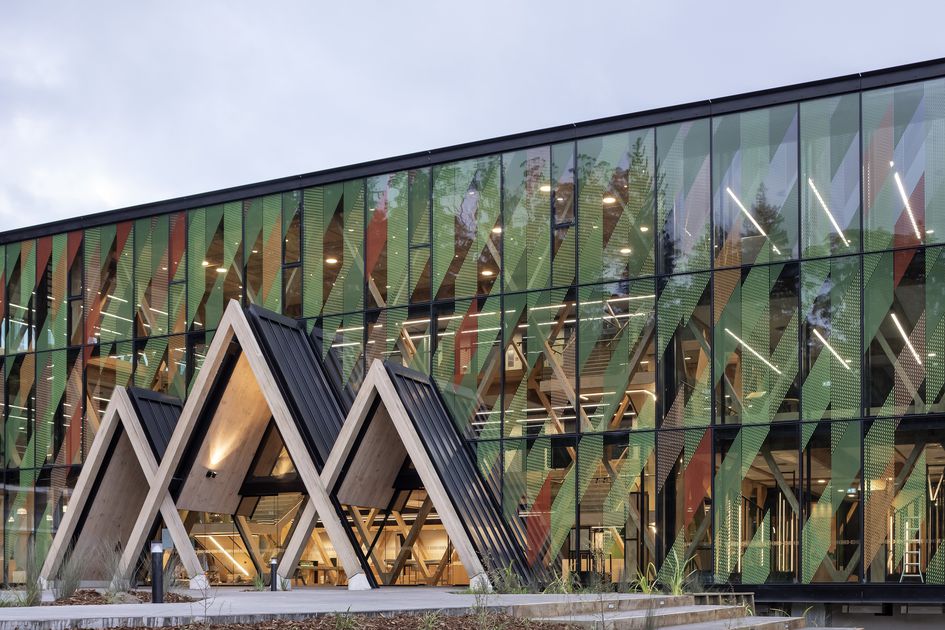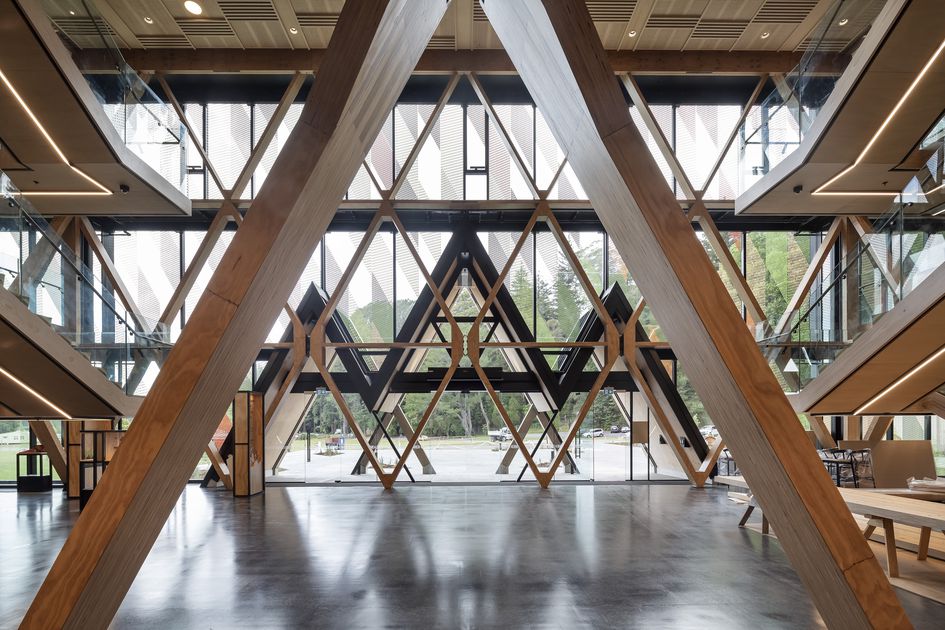It’s partially set up to keep us accountable. That doesn’t mean we need to start producing carbon-zero buildings tomorrow. It does mean we plan to take baby but determined steps towards it. We’ve divided our goal into thirds (30 per cent less carbon each decade) and, across the spectrum of typologies – from commercial to civic and residential - we are encouraging clients to consider ways carbon can be saved.
For the most part, we find that they are willing to have the conversation about sustainability and, where practical, to swap out culprits such as steel and concrete in favour of using New Zealand-made products like cross laminated timber (CLT) and laminated veneer lumber (LVL) to help in this noble quest. That helps reduce the embodied carbon in a building – the carbon created when making the materials - but we’re also designing to reduce operational carbon such as we did with Te Whare Nui o Tuteata, the forestry research facility for Scion. In that project we achieved a benchmark standard set by the Royal Institute of British Architects for buildings to meet by 2030 but we understand that won’t always be the case. Our plan is to group our annual builds together and measure their savings – some might achieve only 10 per cent, others 80 per cent – across the spectrum we hope to achieve our targets.
While the goal may seem ambitious, we envisage there’ll be a natural uptake in the materials and methodology in the architecture and construction game as players recognise their responsibility in this regard and are given better tools to measure it. Currently CAD and BIM (building information management) tools can be set up to quantify materials and this data can be entered into specialised tools such as eTool (a European programme) to assess the carbon criteria. It’s technology that is in its infancy but will only progress and make it easier to integrate carbon measurement into everyday process.
Currently, CLT and LVL are more expensive than alternative structural products such as steel. That said, the Covid crisis has inflated the cost of imported goods and NZ-made alternatives are gaining ground. As demand increases, prices will fall, and the local manufacturers will become more competitive. (An interesting way to look at this is that the wood used in the Scion building - 550 cubic metres - took only 35 minutes to grow within the New Zealand forestry plantations.)
Te Whare Nui o Tuteata is an exemplar building in this respect and has received many awards (including the Architizer jury prize and the popular choice award in the Architecture + Wood category, plus The Building Award at the 2021 INDE Awards for Indo-Pacific countries) but smaller projects are equally critical to us achieving a better outcome for the planet.

